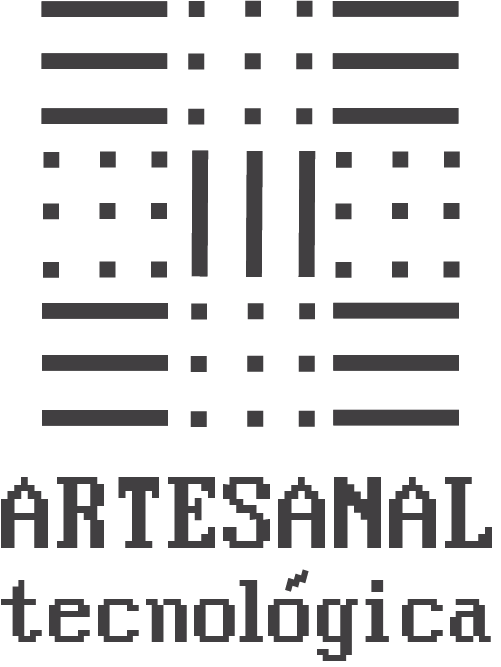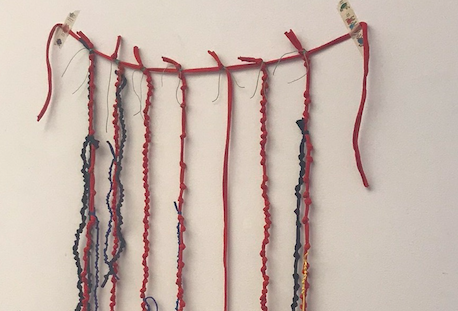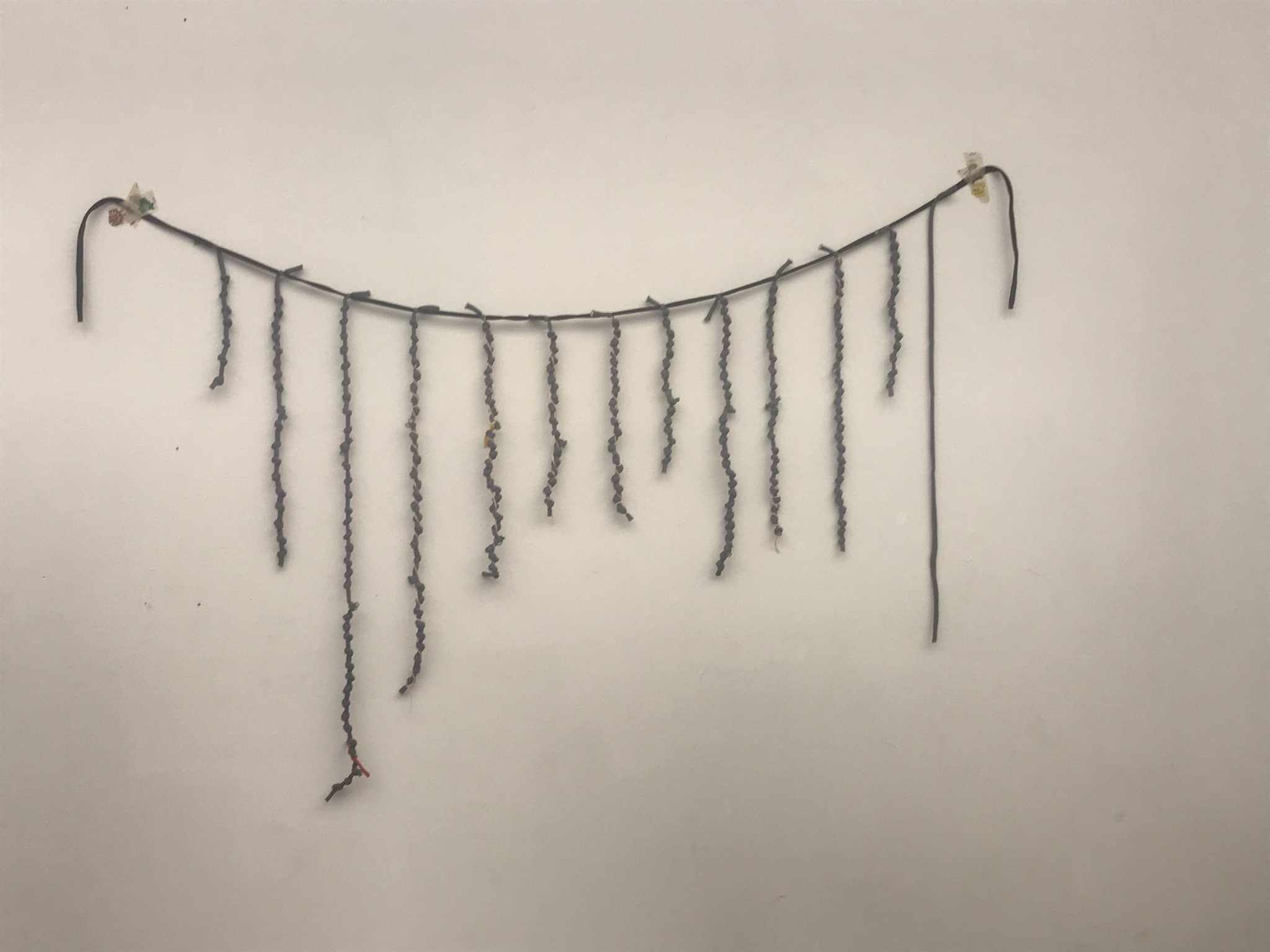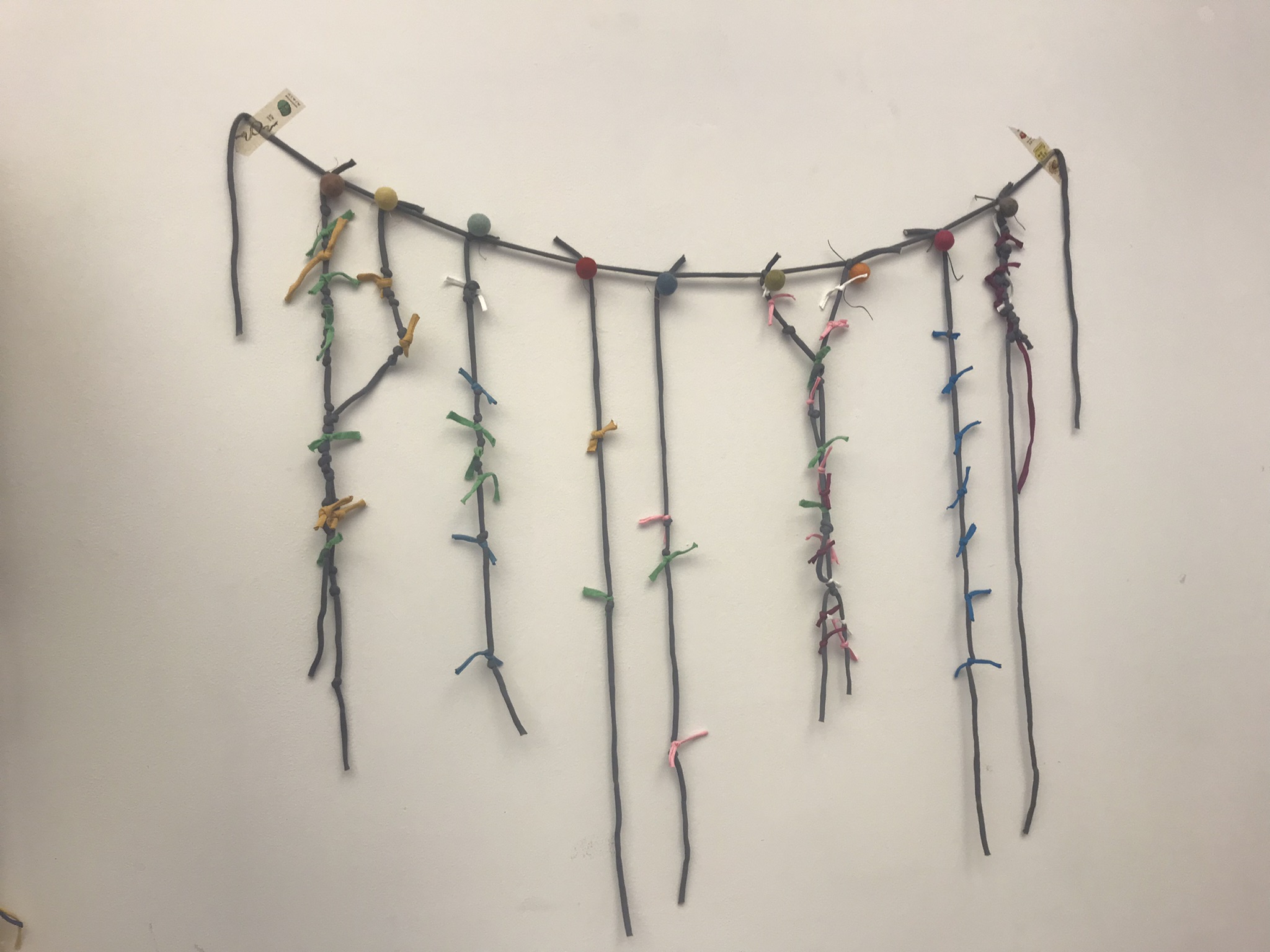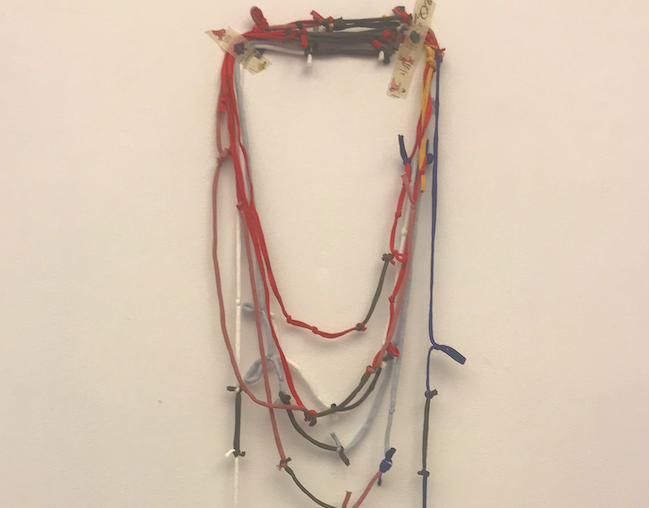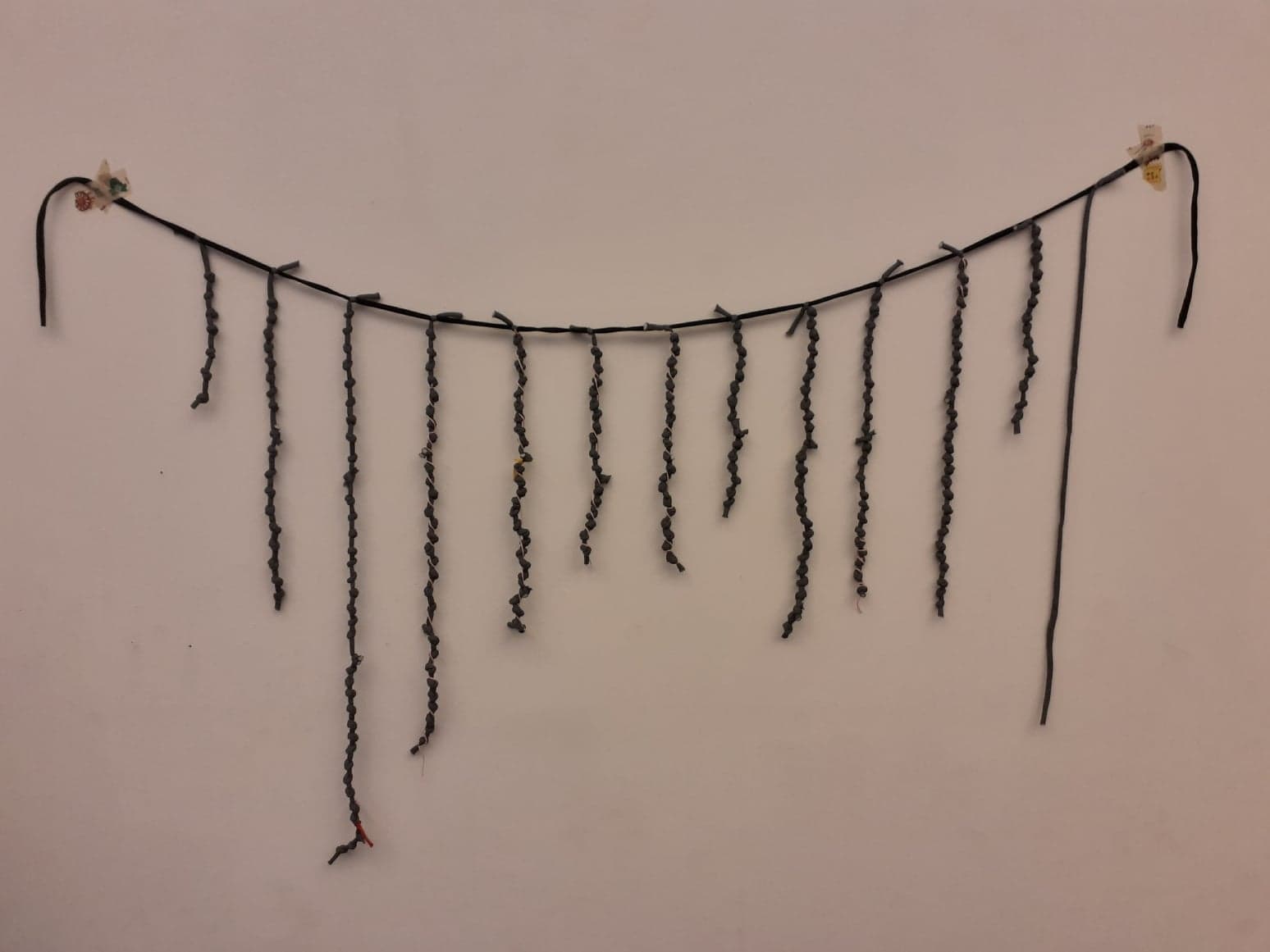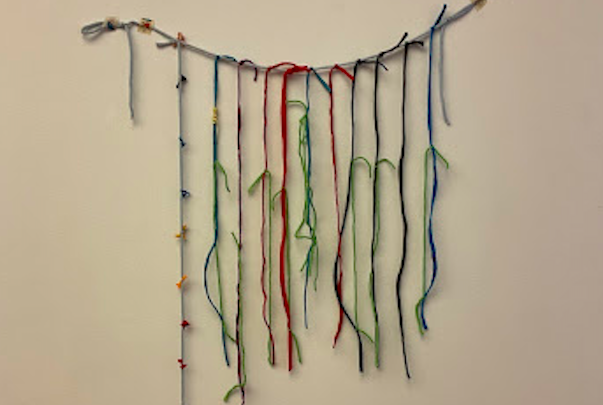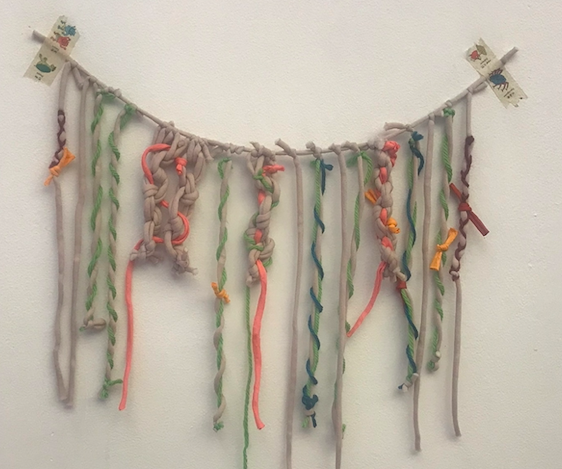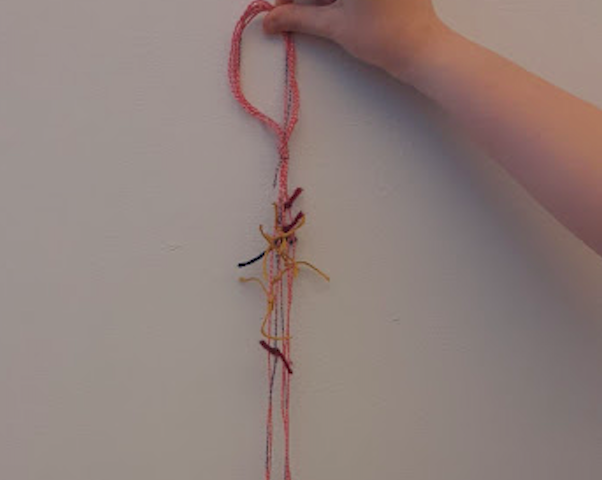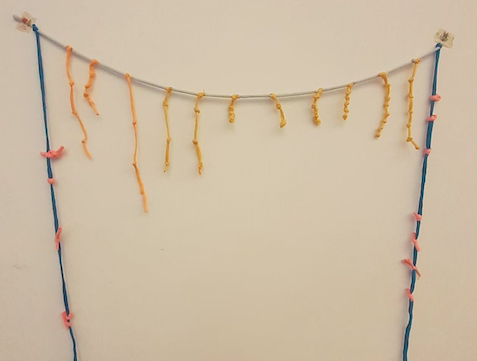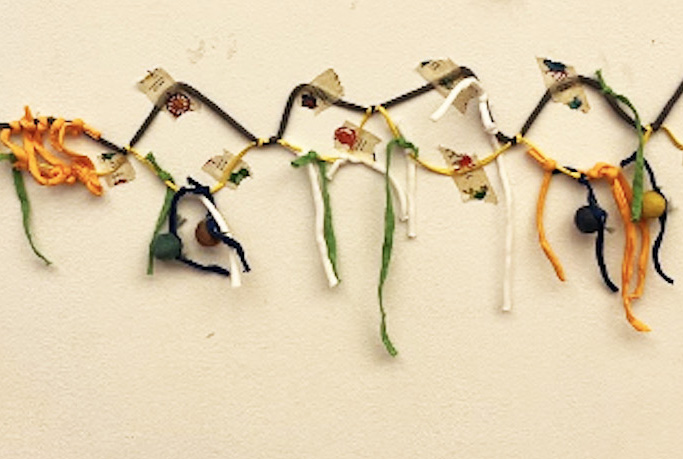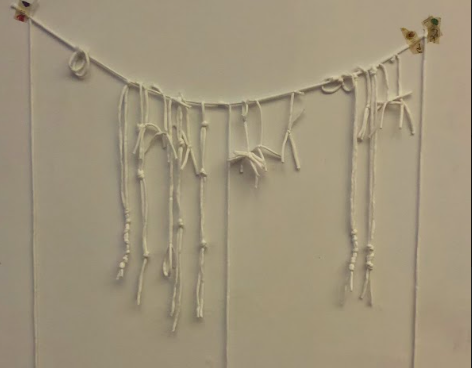Materializing the body, knotting quipus
The Quipus or in inca Khipus, were an unprecedented pre-columbian semiotic technology, based in the use of tridimensional signs, mainly knots, cords and colors. Through these textile objects, it was possible to register all sorts of information, according to chroniclers, from accounting data to tales and songs. Little is known about this material language, however they are seen by the literature as a sophisticated system of hierarchies of knotted symbols, in which the order of components, colors, cords categories, types of knots and the interaction between them, may have been the key of a grammar through which narrative structures, temporalities, contexts, actions and senses were expressed.
This textile exploration is based on the observation of antique quipus, in order to represent our present in the context of the pandemic. In particular, our bodies though the covid 19 lockdown, its movement, the act of reencountering with others, venturing through textures and materials, the composition of a sensible language that runs across the same body that it narrates.
With these textile explorations we set out to address the following questions: What types of data or digital traces represent what it was to inhabit and live through the Covid 19 pandemic? How by materializing these digital traces can we reflect about our corporeal experiences during this time? In which way the knotting of Quipus is shaped as a material and tactile medium to relate to our corporeal data?
These quipu explorations were materialized at the DRS’22 workshop that took place in Bilbao, Spain. Information about the workshop can be found here: https://blogit.itu.dk/knotting/
